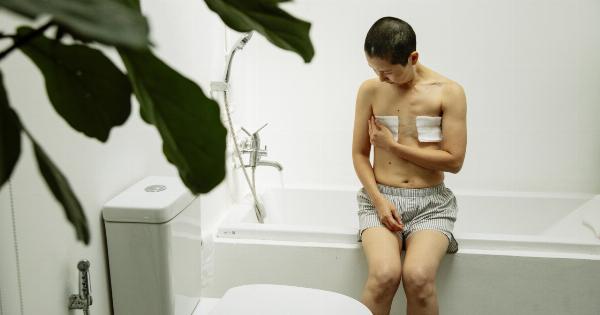Nipple discharge is a common condition in women, and is often due to benign causes such as hormonal changes, pregnancy, or breast-feeding.
However, when nipple discharge occurs unexpectedly or in unusual amounts, it can be a cause for concern and may indicate an underlying medical condition. In this article, we will discuss the different types of nipple discharge, their causes, and when to seek medical attention.
Types of Nipple Discharge
Nipple discharge can be classified into different types based on their color and consistency. Understanding the type of discharge can help determine the underlying cause and guide treatment.
Clear or Watery Discharge
Clear or watery nipple discharge is common and is often caused by hormonal changes. This type of discharge can occur during puberty, pregnancy, and lactation.
It may also be a side effect of certain medications such as birth control pills or antidepressants. In most cases, clear or watery nipple discharge is not a cause for concern and does not require medical attention.
Bloody Discharge
Bloody nipple discharge is less common than clear or watery discharge and can be a cause for concern. Bloody discharge can be a sign of breast cancer or other underlying medical conditions such as papilloma or intraductal carcinoma.
Women who experience bloody nipple discharge should seek medical attention immediately.
Yellow or Green Discharge
Yellow or green nipple discharge is also uncommon and can be a sign of infection or inflammation. This type of discharge may also be accompanied by other symptoms such as pain, redness, or swelling.
Women who experience yellow or green nipple discharge should seek medical attention to determine the underlying cause and receive appropriate treatment.
Serous Discharge
Serous nipple discharge is a thick, sticky, and yellowish fluid that may be accompanied by blood. This type of discharge is often caused by fibrocystic breast disease or a benign tumor.
Women who experience serous nipple discharge should see a healthcare provider to rule out any underlying medical conditions.
Causes of Nipple Discharge
Nipple discharge can be caused by a variety of factors, including hormonal changes, pregnancy, breast-feeding, medications, and medical conditions.
Hormonal Changes
Hormonal changes, particularly during puberty, menstruation, and menopause, can cause nipple discharge.
These hormonal changes can affect the balance of estrogen and progesterone in the body, leading to an overproduction of breast milk or other types of nipple discharge.
Pregnancy and Breast-Feeding
Pregnancy and breast-feeding can also cause nipple discharge. During pregnancy, the body produces high levels of hormones that stimulate milk production. Breast-feeding can also lead to nipple discharge due to the constant stimulation of the breasts.
Medications
Certain medications can cause nipple discharge as a side effect. These medications include birth control pills, antidepressants, and some blood pressure medications.
If you are experiencing nipple discharge and are taking any of these medications, talk to your healthcare provider.
Medical Conditions
Nipple discharge can also be a sign of an underlying medical condition such as breast cancer, papilloma, or intraductal carcinoma. Other medical conditions that can cause nipple discharge include infections, inflammation, and fibrocystic breast disease.
If you have nipple discharge that is persistent, bloody, or accompanied by other symptoms, seek medical attention immediately.
When to Seek Medical Attention
Nipple discharge that is unexpected or occurs in unusual amounts can be a cause for concern.
Women who have persistent, bloody, or greenish discharge, or discharge that is accompanied by other symptoms such as pain, redness, or swelling, should seek medical attention immediately.
Diagnostic Tests for Nipple Discharge
If you have nipple discharge that is persistent or concerning, your healthcare provider may recommend diagnostic tests to determine the underlying cause. These tests may include a physical exam, a mammogram, an ultrasound, or a biopsy.
Treatment for Nipple Discharge
The treatment for nipple discharge depends on the underlying cause. Hormonal changes, pregnancy, and breast-feeding may not require any treatment and may resolve on their own. Medications that cause nipple discharge may require a change in medication.
Medical conditions such as infections, inflammation, or breast cancer may require medication, surgery, or other treatments.
Conclusion
Nipple discharge is a common condition in women, but unexpected or unusual discharge can be a cause for concern and may indicate an underlying medical condition.
Understanding the types and causes of nipple discharge can help women determine when to seek medical attention and receive appropriate treatment.




























